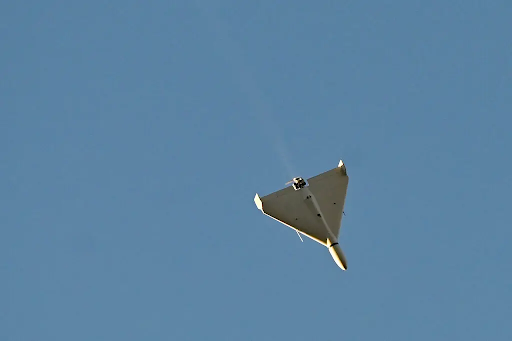Russian Drone Strikes Near NATO: Prelude to World War 3 or Isolated Incidents?
An undated image of an Orlan 10 unmanned aerial vehicle (UAV). Photo: Russian Defense Ministry/Reuters
On Sept. 8, a Russian-operated Shahed-type drone crashed in Latvia's Rezekne region. The drone had entered Latvian airspace from Belarus and was tracked by air defense systems. While there was no immediate harm, Latvian Minister of Defense Andris Sprūds emphasised this incursion's seriousness, as any violation of a North Atlantic Treaty Organization (NATO) member's airspace could have broad security ramifications. Despite NATO’s air defenses monitoring the situation, there was no immediate military response, raising concerns about the alliance's ability to deter such incursions.
In recent weeks, tensions in Eastern Europe escalated as Russian drone strikes impacted multiple NATO member states. Another country that saw repeated airspace violations from Russian drones was Romania. On the same day, Sept. 8, Russian Shahed-type drones breached Romanian airspace during an attack on Ukrainian targets.
These Iranian-made drones, used extensively by Russia, prompted Romania to issue alerts to its border regions, warning civilians of potential danger. Although no major damage was reported, Romania’s Foreign Ministry voiced strong concerns about these incursions, urging NATO to take decisive actions in response to Russia’s violations. In addition, Romania deployed F-16 fighter jets to monitor its airspace due to these incursions.
Russian Shahed drone flying over Kyiv. Photo: Sergei Supinsky/Agence France-Presse
Remarkably, the Black Sea has increasingly become a critical flashpoint for tensions between Russian and NATO-aligned forces, especially as it plays a vital role in regional trade and military strategy.
On Sept. 12, in addition to utilising drones, Russia deployed strategic bombers to launch missile attacks on civilian grain vessels operating near Romanian waters, heightening concerns about potential threats to NATO states' sovereignty and territorial waters. These attacks occurred amid ongoing efforts to disrupt Ukrainian grain exports — crucial not only to Ukraine’s economy but also to global food supply chains.
Romania, a NATO member, expressed heightened security concerns, as the attacks were alarmingly close to its border. However, NATO Deputy Secretary General, Mircea Geoană, noted that the Russian strikes were focused on Ukrainian Danube River ports. He underscored that, to date, there is no evidence of deliberate targeting of NATO territories by Russia, though the proximity of these incidents continues to cause significant unease among alliance members.
Each of these incidents underscores Russia’s evolving hybrid warfare tactics, testing NATO’s response thresholds while exploiting legal and geographical ambiguities. NATO’s restrained responses, focused on diplomacy rather than military action, reflect the complex balance between escalation management and the need to assert collective defense under Article 5. Article 5 states that an armed attack against one member is considered an attack against all, and was designed to ensure mutual defense and stability in Europe. The lack of a coordinated response to the drone incursions reveal a potential gap in NATO’s commitment to collective security. As a potential solution to this, the Minister of National Defense of Romania, Angel Tîlvăr, proposed “the implementation of NATO’s Integrated Air and Missile Defense rotational model.”
The organization faces a security dilemma: responding aggressively to avoid appearing weak could escalate tensions with Russia, while inaction may embolden further violations of sovereignty.


